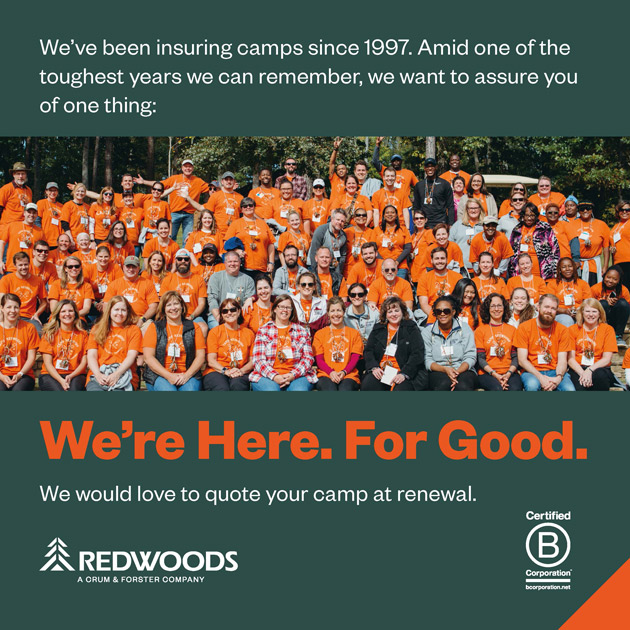To illustrate the dichotomy and power of board strength versus weakness I will use two macro scenarios that, as a consultant, are all too familiar:
• Scenario One: I am approached by a board member to engage in a process designed to remove the senior professional. The performance of this individual across a spectrum of tasks is perceived to be subpar. They want the individual removed and they want me to provide the justification and, in some cases, handle the removal.
• Scenario Two: I am contacted by an executive director or CEO who is at their wits’ end with the behavior of their board chair or board members in general. They want me to undertake an assessment that provides support for their perspective and justifies that the board members are preventing them from meeting certain goals.
While always happy to speak with potential clients, I have never taken a job based on scenario one. It is not kind, fair, or productive to begin an engagement with a predetermined outcome — especially when an individual’s livelihood is at stake. The fact that leadership is looking to a third-party to solve its own fiduciary responsibilities is indicative of a weak board. Having shared this, I have, on occasion, reframed the conversation to help the board member recognize this is not healthy. We can then engage in an organizational “health check.” In most cases, the outcome is a positive shift in organizational health, focus, and the board/professional relationship. If, however, this approach is ignored and they simply want to dismiss an executive, I tell them to put on their adult pants and do it themselves. I caution that evaluation, culture, and kindness are not just the right way to proceed, but in the best interests of the entity itself. Why? Because how they handle these delicate decisions and transitions is a window into the fiduciary behavior for the next executive director or CEO recruit to ponder.
In the second scenario, a professional wants me to address a seemingly ineffective board and justify their own lackluster performance. In this situation, I am likely to spend time helping the executive better understand their role in allowing a weak board to fester and continue. The senior professional has a central role in the board’s performance, evaluation, and impact, even though technically the board is also the professional’s employer.
At the root of both examples is the importance and benefit of a strong board compared to a merely compliant one. It’s a pox on both parties to permit such behavior to continue, and the fiduciary agents (the board) are legally bound to act in a certain way with regard to oversight of the entity. Ignore the legal perils for a moment; this divisive activity takes time and effort away from the agency’s focus. Think about all that wasted energy focusing on negative outcomes versus the opportunity to work cohesively to address positive change.
Yes, in the real world there are poor executives and poor board members. Sometimes, regardless of how hard either party tries, the relationship sours, resulting in one (or even both) of the parties needing to move on. Preferably, we notice the symptoms early enough that they can be addressed and rectified. What do they look like? Here are some clues that should start to raise the hair on the arms of both volunteer and professional:
- Board attendance at meetings is below 80 percent.
- Less than 75 percent of board members make a gift of significance (a gift of based on their financial capacity, not a predetermined minimum gift).
- Board members have served more than three consecutive terms (excluding executive officers).
- Professional perspective is dismissed and not desired or respected.
- Meetings last longer than two hours and are report-based rather than interactive.
- Executive evaluation (including contract renewal and compensation) is erratic in terms of timing and a cause of dissention.
- Votes are contentious and maybe even fiercely divided.
- Decision-making is based on personal feelings and situations and not on the best interests of the clients being served (including campers, families, and staff).
- The line between macro strategy and management is blurred and impacts operations (see Figure 1 for an appropriate delineation between board, management, and staff).
- The thought of working with the board is emotionally (and even physically) exhausting.
According to a comprehensive study of nonprofit board practices (BoardSource, 2017), emerging trends require us to sit up and pay attention. Key trends include:
- Boards that evaluate their performance regularly perform better.
- Two characteristics matter most:
- a board’s understanding of its roles and responsibilities, and
- a board’s ability to work as a collaborative team toward shared goals.
- Board meeting structure relates to overall performance.
- The board chair sets the tone for the chief executive’s relationship with the board.
With all this information to digest, it is worth considering that some professionals still believe a weak board dynamic is in their best interest. This is what I have gleaned to be the rationale for such thinking: They leave you alone and are frequently delighted at everything you do. They leave you alone and do not challenge you beyond the scope of items you choose to bring to their attention. They leave you alone. Are you getting the less-than-subtle message here? For many professionals, both new and seasoned, a board that allows them to get on with their job with minimal interference is a joyous thing to be celebrated. Board meetings are a mixture of cheerleading and static, predictable reporting. Macro-level strategy is left to the staff and board members who come to camp once a year are exposed to the emotion of what you create and, again, leave you alone. The only time you really need them is for budget approval (which a weak board nods through), contract renewal, and perhaps helping with an event or two a year. They do call occasionally, perhaps because a friend needs a favor, there is a wait-list issue, or their child has a problem for you to solve. Easy stuff and this lack of oversight becomes a self-fulfilling prophecy in terms of belief from both sides that all is well, healthy, and best left to its own inertia.
I strongly recommend you reconsider this calm-waters-can-be-left-alone approach. My observation of most organizations is that they follow a sine wave (see Figure 2) of flowing ups and downs — all within a reasonable wavelength that causes little disruption. And then, as predictable as death and taxes, that wave breaks and a crisis of one form or another erupts. It could be an internal issue or an external factor over which there is little control. It could also be as simple as the need to raise funds for a capital project. Either way, it is absolutely going to happen, and the ability of management to respond is going to determine the recovery period length and any collateral damage. A camp is at its most vulnerable during the crisis and recovery period. Who can the camp turn to for support, guidance, counsel, and even external-facing commentary to calm the situation and help bring stability back as quickly as possible? I wonder if it could be a group of committed, legally bound, engaged individuals carefully selected because they bring different skills and talents to the table and are doing it for free. If that sounds like a fully functional, dynamic board, it is.
The rub is that you only know you need the board when you do, and that is the worst time to try and empower a weak board to be strong. The board members will not be prepared and will be confused that their input is suddenly necessary and critical. What do weak boards therefore tend to do? Look to blame (likely the professional) and reframe the issue. Now you must contend not only with the initial problem, but also with a group of board members who are adding to the noise instead of helping calm it.
Many professionals know they have a weak board but do little to change the dynamic. From a self-preservation and ease-of-operation perspective, some professionals walk away from the challenge and hard work associated with board development and end up suffering for it. Prior to consulting, as an executive myself, I treasured and sought the wisdom, guidance, and support of my board. I was challenged, pushed, and encouraged to think deeper and harder to find better solutions and strategies. In the end, my strong board made me a better executive. When crisis hit, we were ready and able to mitigate the risk because of that strength.
If the idea of board development as a priority is a struggle, try viewing your board members through a different prism that fits entirely within the scope of any nonprofit. Board members are another program to be developed, nurtured, evaluated, and improved. The experience a board member has is no different than the investment you make in your counselor-in-training (CIT) program or your summer camp staff. When they leave you, they will have had a life-changing experience that will provide them the tools to progress and impact their community in a positive manner. The fact that they are, in many cases, older than your CITs and staff is immaterial. They deserve your dynamic engagement — they also just happen to be your employer.
An engaged board will ensure you are a better camp director, CEO, or executive director. If your recruitment protocol is well designed, they provide free and magnificent consulting on topics such as labor law, marketing, investment, capital development, etc. The list is limited only by the preparation you put into determining the right composition, diversity, and engagement of the members. Once they have served their term, they will also become ambassadors who help promote your agency. Moreover, when a crisis hits (and it will), current and former members can be the steadying force that demonstrates strength.
Board membership is an honor that should be selective and clear in terms of task, responsibility, and time commitment. On the flip side, the lead professional has the obligation to ensure the board acts as the fiduciary. While board member recruitment and invitation are not formally the purview of the senior professional, their input should be welcomed and carefully considered. If, in the end, a weak board is allowed to fester, it is likely because the professional did not take the time to focus on and nurture the board’s key role. Guess what happens to professionals with weak boards — they call consultants and talk about one of two scenarios.
What Is a Fiduciary?
Board members have a legal duty to act with care and in the best interest of the organization, and to remain loyal to its mission as opposed to acting in their own interest or that of the CEO/executive they supervise.
Duty of Care
The board members must give the same care and concern to their board responsibilities as any ordinary, prudent person would. This means actively participating in board meetings and on committees and working with other board members to advance the organization’s mission and goals. They fulfill this by overseeing the organization’s activities, reading and understanding financial reports, and being willing to question expenditures. They are also responsible for strategic planning and achieving the organization’s short- and long-term goals.
Duty of Loyalty
Board members must place the organization’s interests ahead of their own. They must disclose any conflicts of interest and must not use board service for personal or commercial gain.
Duty of Obedience
Board members must ensure the organization is abiding by all applicable laws and regulations and doesn’t engage in illegal or unauthorized activities. They must also carry out the organization’s mission in accordance with the purpose stated in the qualifying documents filed with the government.
Reference
BoardSource. (2017). Leading with intent: 2017 national
index of nonprofit board practices. Retrieved from
leadingwithintent.org/wp-content/uploads/2017/09/LWI2017.pdf
David Phillips is principal of Immersive1st, a firm specializing in fundraising, planning, and visioning; governance; acute organizational analysis, and program creation; and implementation and evaluation. A lifelong communal professional, his passion is doing important things with good people who make a difference (and having fun while doing it). He holds an MSW in Social Work with a focus on community organizing and development from the University of Pittsburgh. David can be reached at [email protected].




